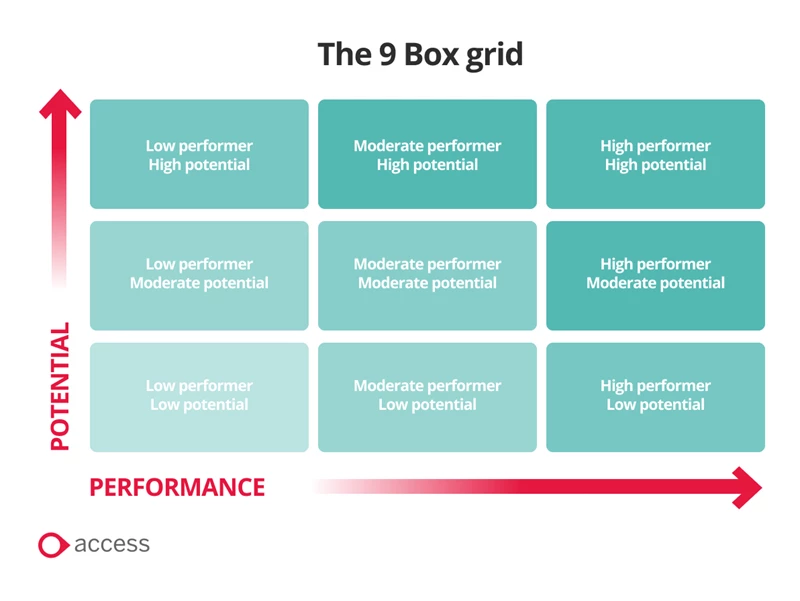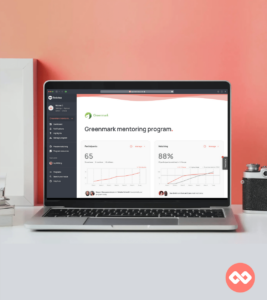Succession planning is a crucial aspect of any organization’s long-term strategy. It ensures that the right talent is in place to drive future growth and fill key leadership roles when needed. One common tool used in succession planning is the 9-Box Grid, a visual representation of an individual’s performance and potential. In this comprehensive guide, we will explore the benefits and drawbacks of using the 9-Box Grid, as well as provide valuable insights and strategies to optimize your succession planning efforts.
Understanding Succession Planning
Before we delve into the nitty-gritty of the 9-Box Grid, let’s first understand the importance of succession planning. While it may seem like a buzzword, succession planning plays a pivotal role in ensuring the continuity of your organization. It involves identifying and nurturing high-potential employees who have the capacity to step into leadership roles when the need arises.
Succession planning is not just a theoretical concept; it is a strategic imperative that can make or break an organization’s future. By proactively grooming future leaders from within, companies can avoid the pitfalls of sudden leadership gaps and ensure a seamless transition of power. This process also fosters a sense of stability and confidence among employees, knowing that there is a clear path for advancement based on merit and potential.
The Importance of Succession Planning
Picture this scenario: your organization’s CFO decides to retire, and suddenly there’s a leadership vacuum. Without a solid succession plan in place, you might find yourself scrambling to fill the void. Succession planning mitigates this risk by facilitating a smooth transition of power, maintaining stability, and preserving institutional knowledge.
Furthermore, succession planning is not just about reacting to immediate needs but also about strategic foresight. By identifying and developing future leaders early on, organizations can align their talent pool with long-term business objectives and ensure a sustainable competitive advantage in the market.
Key Elements of Effective Succession Planning
Successful succession planning isn’t just about filling key positions; it’s about building a pipeline of talented individuals who can drive future growth. To achieve this, you need to identify key roles, assess potential successors, and provide them with development opportunities. By nurturing and mentoring your top talent, you create a culture of growth and opportunity.
Moreover, effective succession planning goes beyond individual talent development; it also involves creating a supportive organizational culture that values learning, collaboration, and innovation. By instilling a mindset of continuous improvement and knowledge sharing, companies can ensure that their succession pipeline remains robust and adaptable to changing market dynamics.
What is the 9-Box Grid?
The 9-Box Grid (also known as the 9-box matrix) is a well-used tool in performance management, consisting of a 3×3 matrix evaluating employee performance (vertical axis) and potential (horizontal axis).

Understanding the nuances of the 9-Box Grid can significantly impact the effectiveness of succession planning strategies. This tool categorizes employees into three segments: low potential, solid contributors, and high potentials, based on their current and future capabilities. By leveraging this framework, organizations can make well-informed decisions about talent development and succession.
The 9-Box Grid is a visual representation of an employee’s performance and potential. It is divided into three categories: low potential, solid contributors, and high potentials. This tool allows you to evaluate and map your employees based on their current and future capabilities, helping you make informed decisions about their career development.
Each quadrant of the 9-Box Grid provides valuable insights into an employee’s performance trajectory. High potentials, located in the top right quadrant, are individuals who exhibit both high performance in their current roles and the potential to take on more significant responsibilities in the future. Solid contributors, found in the middle section, are reliable employees who consistently meet expectations but may need further development to reach their full potential. Lastly, employees in the low potential category, situated in the bottom left quadrant, may require additional support or redirection to improve their performance and future prospects.
How Does the 9-Box Grid Work in Succession Planning?
By using the 9-Box Grid, you can identify individuals who show promise and have the potential to take on leadership roles. This allows you to focus your efforts on nurturing and developing these high-potential employees, ensuring a ready supply of talent when key positions become vacant.
Moreover, the 9-Box Grid serves as a roadmap for succession planning initiatives, guiding HR professionals and organizational leaders in identifying critical skill gaps and creating targeted development plans. By aligning talent management strategies with the insights gained from the 9-Box Grid, companies can proactively build a robust leadership pipeline and mitigate the risks associated with key personnel transitions.
Advantages of Using the 9-Box Grid in Succession Planning
Now that we understand what the 9-Box Grid is, let’s explore the advantages it brings to succession planning.
The 9-Box Grid is a powerful tool that goes beyond just categorizing employees based on performance and potential. It serves as a visual representation of your organization’s talent landscape, providing valuable insights into the strengths and development areas of your workforce. This holistic view allows you to not only identify high-potential individuals but also pinpoint areas where additional support and resources may be needed to nurture talent effectively.
Ultimately, it provides:
- Simplicity and Clarity: The 9-box grid offers a straightforward, visual way to evaluate employees, making it easier to communicate and understand performance and potential.
- Comprehensive Evaluation: Combines performance and potential, providing a holistic view of an employee’s future capabilities.
- Consistency: Ensures uniform evaluation criteria across the organization, reducing subjectivity and bias.
- Focused Development: Helps identify specific development needs, enabling targeted training and growth opportunities.
- Strategic Alignment: Aligns talent management with organizational goals, aiding in strategic succession planning.
Enhancing Talent Management
The 9-Box Grid provides a systematic approach to talent management. By categorizing employees based on performance and potential, you can identify high-potential individuals who can be groomed for leadership roles. This targeted development ensures that your organization has a robust pool of future leaders.
It also encourages ongoing conversations about talent within your organization. By regularly reviewing and updating the grid, you create a culture of transparency and accountability regarding talent decisions. This open dialogue fosters employee engagement and allows for adjustments to be made in real-time based on changing business needs.
Facilitating Leadership Development
By identifying employees with high potential, you can provide them with tailored training and mentoring opportunities that hone their skills and prepare them for future leadership positions. With the 9-Box Grid, you can align your leadership development programs with the needs of your organization.
Often this approach also serves as a roadmap for succession planning by highlighting potential leadership gaps within the organization. By addressing these gaps proactively, you can mitigate risks associated with key talent departures and ensure continuity in critical roles.
Promoting Strategic Workforce Planning
The 9-Box Grid enables you to make strategic workforce decisions by identifying critical positions that require succession planning. By focusing on these roles, you can proactively develop talent pipelines, ensuring a seamless transition when the time comes.
When analyzing trends and patterns in talent distribution across different segments of the grid, you can anticipate future talent needs and align your recruitment and development strategies accordingly. This proactive approach to workforce planning positions your organization for long-term success and sustainability. Ultimately, the data gathered from the 9-Box Grid can inform broader workforce planning initiatives.
Disadvantages of Using the 9-Box Grid in Succession Planning
While the 9-Box Grid offers numerous benefits, it’s important to acknowledge its limitations and potential drawbacks.
- Bias and Subjectivity: The grid can introduce biases, such as the halo/horns effect, which can lead to unfair evaluations.
- Lack of Reliability: Predictive accuracy for identifying future leaders is relatively low.
- Negative Impact on Morale: Poor rankings can demotivate employees and foster a fixed mindset.
- DEI Concerns: Marginalized employees may be disproportionately affected, undermining diversity, equity, and inclusion efforts.
- Over-Simplification: Reduces complex employee performance and potential to a simple visual, which may overlook nuanced aspects.
Potential for Subjectivity and Bias
Like any assessment tool, the 9-Box Grid is susceptible to subjective judgment and bias. The interpretation of an employee’s performance and potential can vary depending on who is making the assessment, leading to inconsistent evaluations. It’s crucial to minimize bias through rigorous evaluation criteria and multiple perspectives.
Managers and evaluators must undergo training to ensure they understand the criteria and are capable of providing fair and objective assessments. Additionally, incorporating calibration sessions where multiple assessors discuss and align their evaluations can help reduce individual biases and ensure a more accurate representation of employees’ performance and potential.
Limitations in Assessing Potential
Assessing an employee’s potential is not an exact science. The 9-Box Grid provides a snapshot of an individual’s capabilities, but it may not capture their full potential or account for unforeseen changes in circumstances. It’s important to complement the grid with regular performance reviews and feedback to get a holistic view of employees’ evolving capabilities.
Organizations can consider implementing talent development programs that focus on nurturing and unlocking the potential of all employees, not just those identified as high-potential in the 9-Box Grid. By providing continuous learning and growth opportunities, organizations can cultivate a culture of development and inclusivity, allowing all employees to thrive and contribute effectively.
Risk of Overlooking Late Bloomers
The 9-Box Grid focuses primarily on high-potential individuals, which may lead to overlooking employees who may not show immediate potential but have the capacity to grow. Late bloomers can bring unique perspectives and valuable contributions to your organization, so it’s vital to consider their development opportunities as well.
Implementing mentorship programs and career development initiatives that cater to employees at different stages of their career can help identify and support late bloomers. By providing personalized development plans and opportunities for skill enhancement, organizations can tap into the hidden potential of these individuals and foster a diverse and dynamic workforce.
Making the Most of the 9-Box Grid in Succession Planning
While the 9-Box Grid has its limitations, there are ways to maximize its effectiveness in your succession planning efforts. By categorizing employees into different boxes based on these criteria, organizations can make informed decisions about talent development, succession planning, and leadership pipelines.
Best Practices for Using the 9-Box Grid
Ensure that the criteria for evaluating performance and potential are well-defined and objective. Train managers on how to use the grid effectively and minimize bias. Regularly reassess employees’ performance and potential to capture their growth and development.
It is essential to involve employees in the process by soliciting their input on self-assessments and career aspirations. This collaborative approach can enhance employee engagement and ownership of their development plans. Additionally, leveraging technology solutions can streamline the data collection and analysis process, making it easier to track and monitor employees’ progress within the 9-Box Grid.
Overcoming the Drawbacks of the 9-Box Grid
Don’t rely solely on the 9-Box Grid; complement it with other assessment methods and feedback mechanisms. Consider using multi-source feedback, mentoring programs, and development plans to support employees’ growth and address the limitations of the grid.
Organizations should also regularly review and update the criteria used in the 9-Box Grid to ensure they remain relevant and aligned with the company’s strategic goals. By continuously refining the evaluation process and incorporating feedback from various stakeholders, organizations can enhance the accuracy and effectiveness of their succession planning efforts.
Strengthening Connections in the Workplace
Succession planning is not just about identifying future leaders; it’s also about creating a cohesive and thriving work environment. By fostering strong connections among employees at all levels, you can create a protected culture of collaboration and teamwork.
One way to strengthen connections in the workplace is through robust mentorship programs. Pairing experienced employees with newer team members can help transfer knowledge, build relationships, and provide support for professional growth. These mentorship relationships can lead to increased job satisfaction and retention rates, as employees feel valued and supported in their career development.
Another effective method to enhance connections in the workplace is through team-building activities. These activities can range from fun outings and social events to more structured team challenges or hackathons, team offsite workshops, and problem-solving exercises. By engaging in these activities, employees can develop trust, improve communication, and strengthen their bonds with colleagues. This, in turn, can lead to a more cohesive and productive work environment where employees feel motivated and connected to their team members.
Cultivating Resilience in Your Team
In today’s rapidly changing business landscape, resilience has become a crucial skill for success. As an HR professional, it’s essential to cultivate resilience in your team members.
Resilience is the ability to bounce back from setbacks, adapt to change, and keep moving forward in the face of adversity. It’s not just about weathering the storm but also about thriving in it. By fostering resilience in your team, you can help them navigate challenges with grace and come out stronger on the other side.
One way to cultivate resilience in your team is to encourage a growth mindset. This involves fostering a culture where mistakes are seen as opportunities for learning and growth, rather than failures. By promoting a growth mindset, you can help your team members develop the resilience to persevere in the face of obstacles and setbacks.
Determining If the 9-Box Grid Is Right for Your Organization
While the 9-Box Grid offers numerous benefits, it may not be suitable for every organization. Assessing your organization’s unique needs and considering factors such as size, culture, and industry can help you determine if the 9-Box Grid is the right fit for your succession planning efforts.
- Assess Your Goals: Evaluate if the 9-box grid aligns with your succession planning and talent management objectives.
- Consider Organizational Culture: Ensure it supports a culture of feedback, development, and growth.
- Evaluate Bias Risk: Be aware of potential biases and have strategies to mitigate them.
- Review Data Accuracy: Check if you have reliable performance and potential data.
- Gauge Employee Impact: Understand the potential impact on employee morale and engagement.
It’s essential to involve key stakeholders from various levels of the organization in the decision-making process to ensure buy-in and successful implementation. Additionally, providing training on how to effectively use the 9-Box Grid can enhance understanding and maximize its impact on talent management strategies.
Succession planning is a vital component of organizational success, and the 9-Box Grid can be a valuable tool in identifying and developing future leaders. By understanding its benefits and drawbacks, and implementing best practices, you can leverage the power of the 9-Box Grid to build a robust pipeline of talented individuals who will drive your organization forward. So, are you ready to take your succession planning to the next level?
Ready to elevate your succession planning with a tool designed to enhance your mentoring programs? Discover how Mentorloop can streamline your process, from initial matching to measuring success.
Ideal for HR and L&D Leaders, large team managers, and anyone focused on professional development, Mentorloop is here to support your goals. Don’t wait to optimize your talent development strategy—Book a Demo today and see the difference Mentorloop can make for your people.




